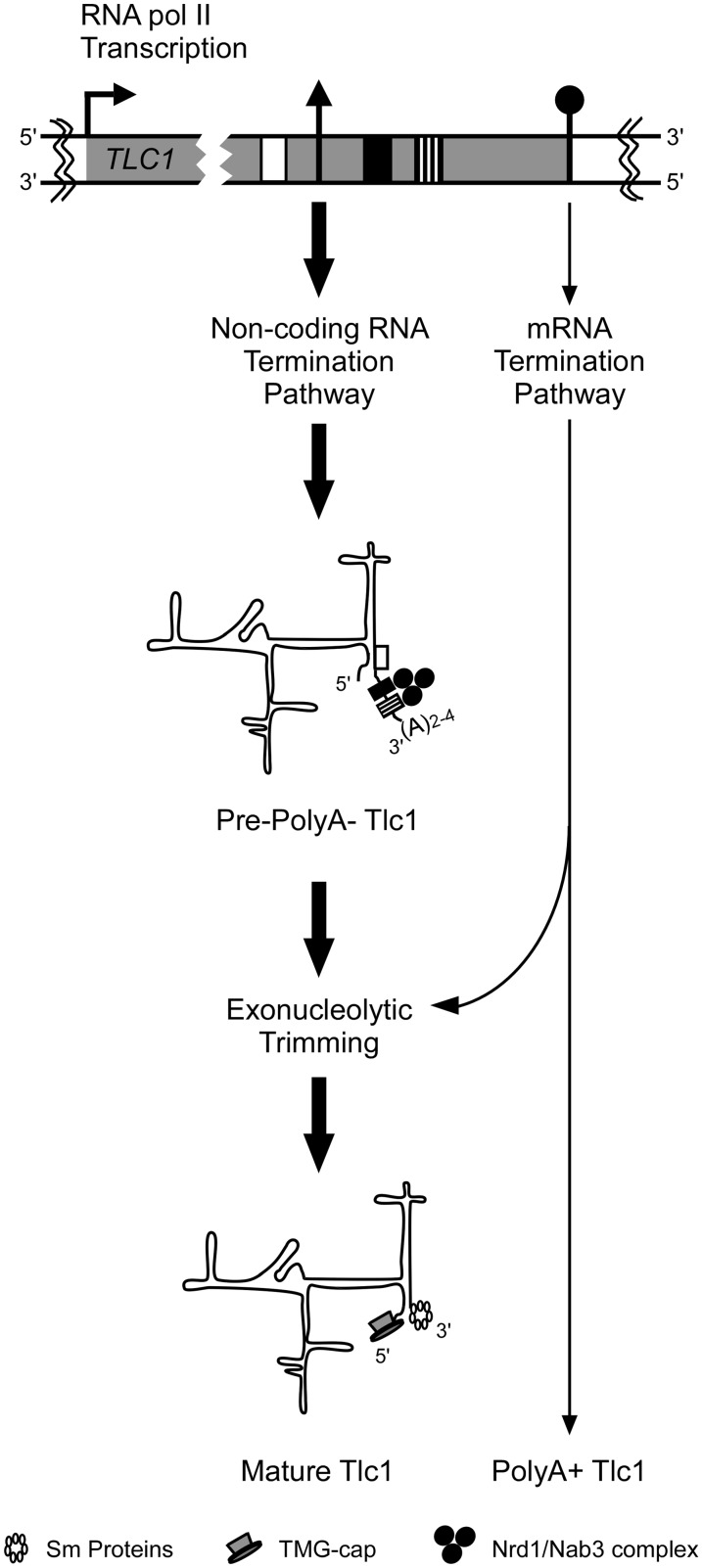Figure 5.
Graphical illustration of maturation pathways for Tlc1 RNA. A schematic representation of the TLC1 transcription unit, with a focus on the 3′-end, is shown on top. The transcription elongation complex of TLC1 either terminates near the mature polyA− 3′-end via the non-coding Nrd1/Nab3 RNA termination pathway when encountering Nrd1p/Nab3p binding sites or continue to the nearby polyadenylation signals. Termination near the mature end will result in a TMG-capped and non-polyadenylated RNA that is trimmed by 3′ to 5′-end exonucleases to the mature 3′-end defined by the position of the Sm binding proteins. Termination near a polyadenylation signal via the cleavage/polyadenylation machinery will produce a polyadenylated RNA that will normally be deadenylated and degraded by exonucleases, unless stabilized by the binding of Sm proteins in the cytoplasm that also facilitates Tlc1 import to the nucleus. Therefore, this polyadenylated Tlc1 can also be processed to the mature form. According to this model, individual mutations in either pathway may not dramatically affect the steady-state level of mature Tlc1 RNA.

